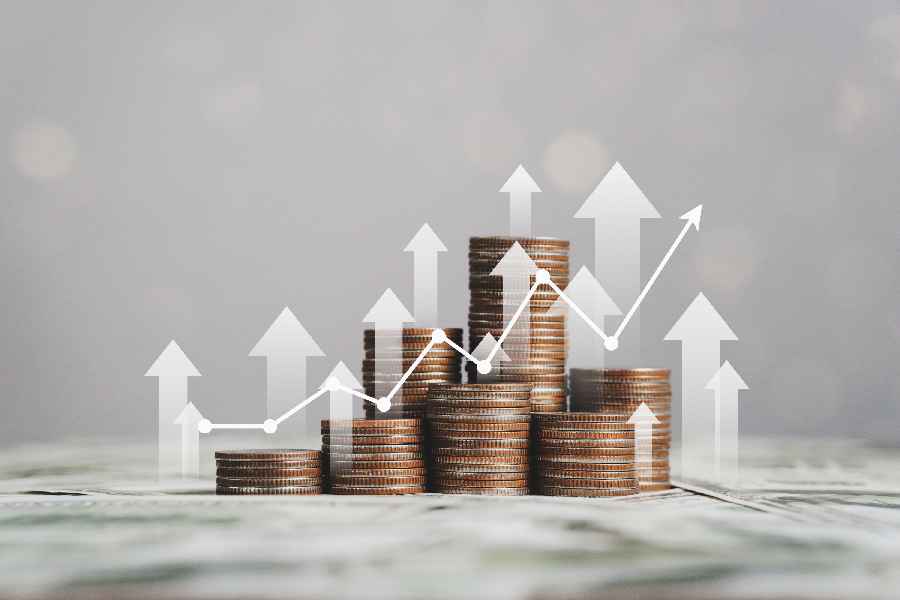trending
neon
Cirque du Soleil offers summer ticket deals
dining out
Celebs ditch the Strip for iconic Henderson restaurant
july 
trending
neon
Cirque du Soleil offers summer ticket deals
dining out
Celebs ditch the Strip for iconic Henderson restaurant
july 

President Biden's economic agenda focuses on sustainable growth through infrastructure investment, clean energy initiatives, and tax reforms. This article explores the key policies shaping the future of the U.S. economy




President Joe Biden's economic agenda is designed to foster sustainable growth, enhance competitiveness, and address pressing challenges such as climate change and income inequality. The administration's approach emphasizes strategic investments, tax reforms, and regulatory changes aimed at strengthening the U.S. economy.
1. Infrastructure Investment and Jobs Act (IIJA)
A cornerstone of Biden's economic policy is the Infrastructure Investment and Jobs Act, which allocates substantial funding to modernize the nation's infrastructure. This includes investments in transportation, broadband, and clean energy projects, aiming to create jobs and stimulate economic activity. The act is expected to generate significant employment opportunities and enhance the nation's competitiveness.
2. Clean Energy Initiatives
The administration is committed to transitioning to a clean energy economy. Policies include incentives for renewable energy production, electric vehicle adoption, and energy efficiency improvements. These initiatives aim to reduce carbon emissions, create green jobs, and position the U.S. as a leader in the global clean energy market.
3. Tax Reforms
Biden's economic agenda includes tax reforms aimed at increasing revenue and promoting fairness. Proposed measures involve raising taxes on corporations and high-income individuals, with the goal of funding infrastructure projects and social programs. Critics argue that these tax increases could have economic drawbacks, including potential reductions in economic output and employment.
4. Strengthening Supply Chains
Recognizing the vulnerabilities exposed by the COVID-19 pandemic, the administration is focused on strengthening domestic supply chains. This includes investments in manufacturing and technology sectors to reduce dependence on foreign suppliers and enhance national security.
U.S. Department of the Treasury
5. Workforce Development
Addressing income inequality and promoting economic mobility are central to Biden's agenda. Policies include expanding access to education and vocational training, increasing the federal minimum wage, and supporting labor unions. These efforts aim to equip workers with skills for emerging industries and ensure fair compensation.
6. Healthcare and Social Programs
The administration seeks to expand access to healthcare and social services. Proposed policies include expanding the Affordable Care Act, reducing prescription drug costs, and increasing funding for social safety nets. These initiatives aim to improve public health and reduce economic disparities.
7. Trade Policy
Biden's trade policy focuses on fair trade practices, strengthening alliances, and addressing global challenges such as climate change. The administration is working to renegotiate trade agreements to ensure they benefit American workers and industries.
8. Fiscal Responsibility
While implementing these policies, the administration emphasizes fiscal responsibility. The proposed budget aims to reduce the federal deficit over time through a combination of tax reforms and strategic spending. However, some analyses suggest that certain tax increases could have long-term economic impacts, including potential reductions in GDP and employment.
President Biden's economic agenda focuses on sustainable growth through infrastructure investment, clean energy initiatives, and tax reforms. This article explores the key policies shaping the future of the U.S. economy
the latest

U.S. GDP Growth Projections Amid Ongoing Supply Chain Issues
As the U.S. grapples with persistent supply chain issues, GDP growth projections for the coming years are being affected. This article explores the impact of these challenges on the economy and forecasts for 2025.

New Tax Reforms Expected to Stimulate Investment in Small Businesses
New tax reforms in the U.S. are designed to incentivize investment in small businesses, potentially driving economic growth and job creation. This article explores the expected impact of these reforms

Global Economic Concerns: How U.S. Policies Are Shaping the Future
As the U.S. continues to implement key economic policies, global markets are taking note. This article explores how these policies are influencing economic conditions worldwide and what it means for future growth

The U.S. Labor Market: Strong Jobs Report Signals Continued Economic Recovery
The latest U.S. jobs report shows strong gains in employment, signaling continued recovery in the labor market. This article explores the implications of these positive labor market trends for the broader economy

Inflation Remains a Challenge for U.S. Economic Growth in 2025
As the U.S. economy heads into 2025, inflation remains a persistent challenge. This article explores the causes of inflation, its effects on economic growth, and potential solutions for managing rising prices

Stock Market Volatility and Its Impact on Economic Stability
Stock market volatility has far-reaching effects on economic stability. This article explores the causes of stock market fluctuations and their impact on growth, investment, and consumer confidence

Biden's Economic Agenda: Key Policies to Shape Future Growth
President Biden's economic agenda focuses on sustainable growth through infrastructure investment, clean energy initiatives, and tax reforms. This article explores the key policies shaping the future of the U.S. economy

U.S. Reforms: What They Mean for Investors
Recent U.S. reforms are reshaping investment strategies, affecting markets, businesses, and investor confidence. Learn how these changes influence financial decisions

The Link Between U.S. Growth and Investment Strategies
Explore how investment strategies shape U.S. economic growth, influencing markets, businesses, and financial trends for long-term stability